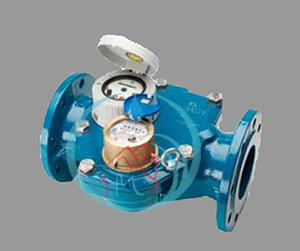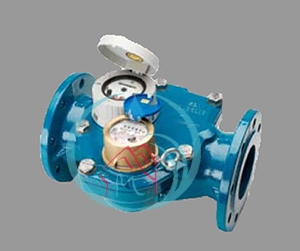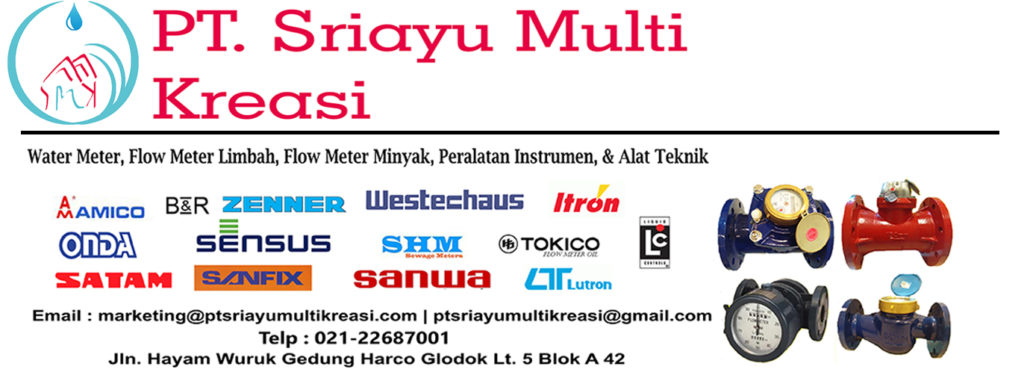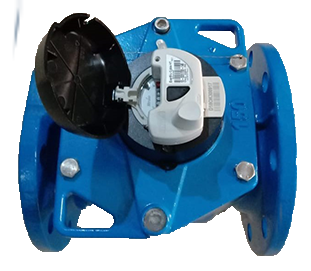
Zenner Type WPV T can be used for flow rates higher than Qn 15 m³/h. They are thereby distinguished by ensuring an especially low head loss, even with high flow rates.
The newly developed measuring insert with a special construction of the turbine where the water flows through, guarantees a high measuring accuracy and long-term stability of the measuring results. Large number rollers on the dry dial counter ensure the readability of the numbers at all times.
Similar to multi-jet meters, Woltman meters measure the velocity of the water flowing through with the help of a turbine. The volume is mechanically calculated, through the known volume of the measuring chamber, and indicated with the roller counters in cubic meters. The unique form of the “paddle wheels” enable the Woltman meters to cover a very large measuring range with especially low head loss. Aside from their construction for high flow rates, they also reliably start measuring with small water quantities.
Active or passive sensors are available for communication with pulse counting modules or automation and control systems. Inductive NAMUR, optical, and Reed sensors can be retrofitted without damaging the calibration seal. Active sensors have a pulse value, depending on the meter size, of either 1 or 10 L/Imp. Reed sensors have a pulse value of 100 L/Imp. up to 10 m³/lmp, depending on the meter size.
The Turbo Compound meter is a special Compound meters designed for measuring extreme fluctuating flow rates. The difference to the normal compound meter is that during periodical replacement the meter body can remain in the piping and only the calibrated measuring insert is interchanged. The main meter, the secondary meter and the spring loaded valve are all assembled on one plate. The periodical replacement is therefore simple, quick and cost-effective.
The main meter is designed as a Parallel Woltman meter, the secondary meter is a multi-jet measuring cartridge. Only a body, where the secondary meter is arranged on the right side, is available. In order to determine the meter reading, like with the classic Compound meters, the meter reading of the main and the secondary meter need to be added.
Reed sensor, optical and inductive-NAMUR sensors can always be mounted on the counter of the main meter without damaging the calibration seal on the counter. The secondary meter measuring cartridge is serially retrofittable and can be easily retrofitted with a Reed sensor. The integration in data communications and automation and control systems is therewith simple.
Performance characteristics in overview :
- Interchangeable calibrated measuring insert consisting of main meter, spring loaded valve, and secondary meter.
- Body remains in the pipeline during the interchange of measuring insert
- Prevention of deposits, dead water or air pocket accumulation through special construction
- No measurement errors in the communication range.
- For cold water up to 30°C (secure up to 50°C)
- For horizontal installation position
- Secondary meter at the right side of the main meter.
Technical Data :
- Nominal Diameter (DN) ; 50 mm
- Nominal Flow Secondary Meter (Qn) : 2,5 m³/h
- Overall length (L) : 270 mm
- Metrological Class : B
- Maximum Flow (Short-term) Qmax : 90 m³/h
- Maximum Flow (Constant) : 35 m³/h
- Transitional Flow : 0,0375 m³/h
- Minimum Flow Qmin : 0,02 m³/h
- Communitation Flow Rate : increasing (2,2 m³/h), decreasing (1,0 m³/h)
- Flow rate with 0.1 bar head loss : 1,8 m³/h
- Maximum temperature : 30°C
- Operating pressure, max (PN) : 16 bar
- Head loss at Qmax : 0,5 bar
- Flange diameter (D) : 165 mm
- Weight : 17,4 kg





